As an Amazon Associate I earn from qualifying purchases.
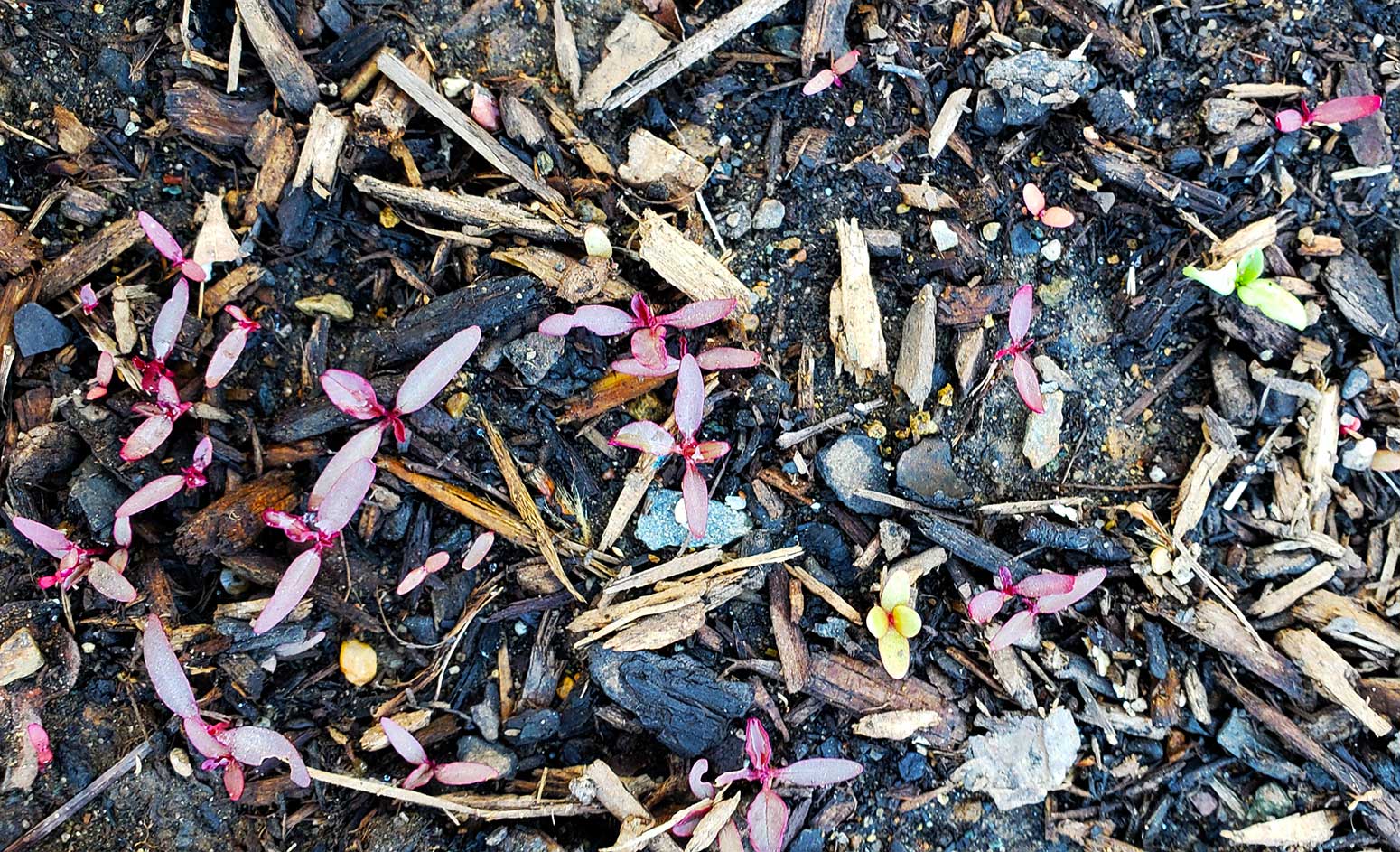
Grids, rows, straight lines. These are the hallmarks of most gardeners, at least here in the United States. And while I will grid out my garden beds, there are always gaps, aberrations. Blame the volunteer plants.
Volunteers are one of the joys of spring. They are an indicator of the vitality of your soil, they let you know you’ll have more of whatever that plant is this coming season, and they will tell you when to plant their cousins. See a bean sprouting? Then you know it’s OK to plant beans.
Every morning I survey my little garden for seedlings. I’ve grown to know them well, even by their cotyledons, or baby leaves. Color, shape, sometimes just how they shine in the morning light, most become young friends.
Most. Not all volunteer plants are friends.
Even the slightest hint of Bermuda grass, which is the Devil in plant form, gets rooted out on the spot — even if it means killing a good volunteer. Bermuda grass is evil. It must die. I tend to get few other truly awful volunteers in my garden beds, although various other grasses and forbs will give it a go, prickly lettuce chief among them.
Other unwanted volunteer plants are either those who decide to grow too close to a favored plant, like a bean sprouting an inch from a pepper seedling, or those that sprout with, well, exuberance. I just picked out about 100 tomatillo seedlings this morning. I didn’t kill them all, however. I left some of the strongest to transplant later. More on transplanting in a bit.
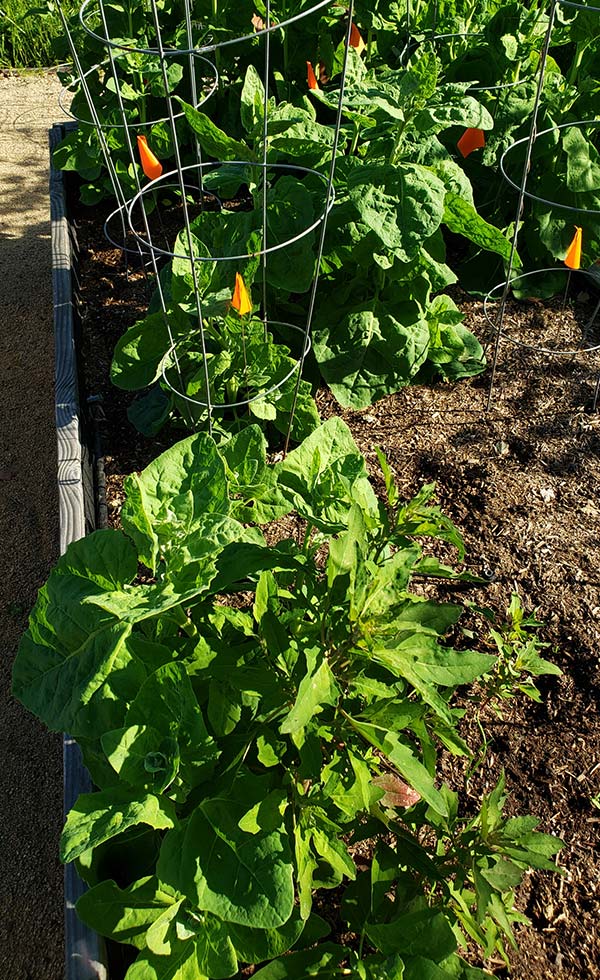
Thinning is another key part of managing your volunteers. I basically play knockout with them. Who is winning? Let the strongest survive. I have scads of a Tarahumara orache growing all over the garden. I’ve let it because it hits its stride far earlier than the peppers and tomatoes that will follow it, and because it is both pretty and delicious.
But when they crowd themselves, I thin them and eat the seedlings. The survivors thank me in their own quiet way.
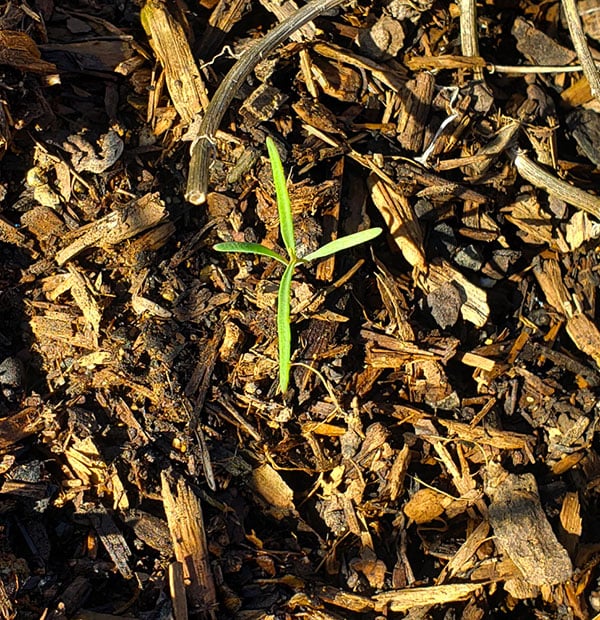
Occasionally some of your volunteers will be especially coveted, like the agretti and pipicha I spotted this week. Both are from plants whose seed is hard to source, and both are plants I love having around. So my regularly scheduled garden programming is happily interrupted by their appearance.
Another category of volunteer plants are those who can live comfortably with their neighbors. Purslane and lambsquarters are two main ones in my garden. Purslane is basically a groundcover and will act like a living mulch for other plants… until I pick and eat it. Lambsquarters can get big in lush soil, but they’re more tall than wide, and beans seem to like them enough to use as scaffolding.
Let’s talk about the elephant in the room: Volunteer tomatoes.
Volunteer tomatoes are arguably the most common type of volunteer plant, other than perhaps the dreaded volunteer squash or melon. Beans, too.
All three suffer the same problem: These plants are, well, promiscuous and will cross with themselves randomly and wildly. Peppers will do this to some extent, too. But the tomatoes and various curcubits are the worst. If Bermuda grass is evil in plant form, these plants are Forrest Gump’s box of chocolates: You never know what you gonna get.
Solve this dilemma by growing only one variety of said plant. Find your beloved squash and stick with it. Beans and peppers are easier, since the various species won’t cross with each other. Tepary beans won’t cross with “regular” beans, nor will they with runner, lima or fava beans.
Capsicum annum doesn’t easily cross with C. frutescens or C. chinense, and nothing seems to cross with C. pubescens. So if you vary your bean plantings, and space out your peppers, you have a good chance of keeping things true to type, so any volunteer plants you find will be, at least in theory, good to go.
Or you can let The Fates decide and go for it. I did that with a tomato seedling last year. I had no idea what it was. All I knew was that it was strong. Very strong. Stronger than any seedling I’d nursed and doted over. So I let it live.
This tomato grow nondescript round, red tomatoes of nondescript size. They were OK. But man, there were so many of them! I managed to jar a gallon of sauce from that one plant. A happy accident. These happen often.
Your main problem with volunteers is that they typically sprout where their parents used to live. And in many crops, this is not ideal. While I try to practice good crop rotation, my garden is heavy on the solanaceae family (tomatoes, peppers, eggplant, etc.) so I compensate by heavily working the soil in the offseason, and by growing beans in winter. It’s not perfect, but it works.
That said, if peppers and tomatoes are volunteering where I am not growing them that year, I will transplant them. These species do fine as transplants, and while it is true that they chose their place to thrive — a choice I try to respect as much as possible — they’ll be OK moved a few feet.
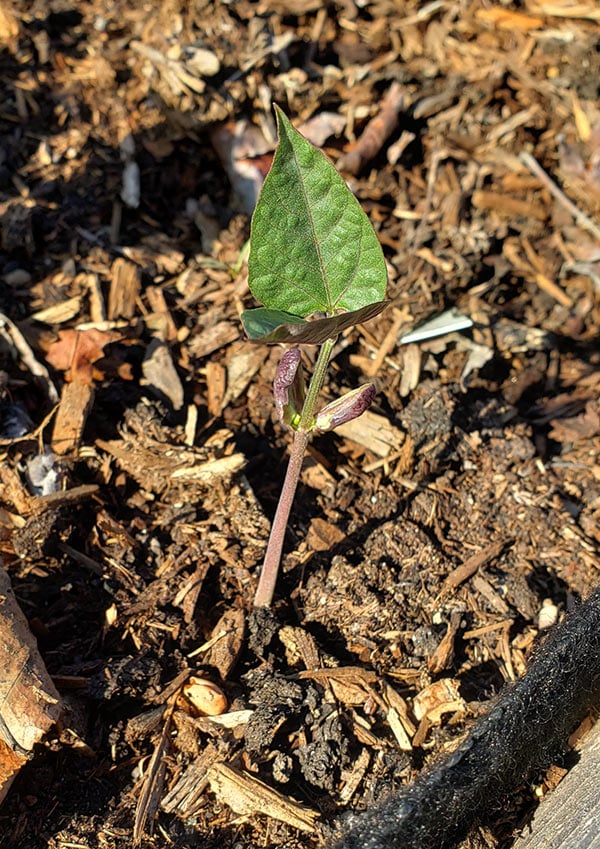
In general, volunteer root vegetables like carrots, melons, beans and peas, and most things in the carrot family (dill, cilantro, parsley, anise, etc.) don’t like to be transplanted.
I love this whole process. It means that my garden has agency of its own, a path that, even if I were gone, it would follow. It will live and breathe without me, but with me it is stronger. And so am I.
The Quarantine Chronicles
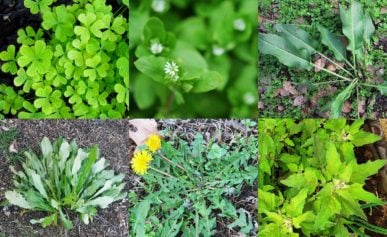
Edible Weeds: Eat Your Lawn
The best place to find edible wild plants might be no further than your own yard.
Read More
Making Stew with What You Have
Sometimes you have to make substitutions these days, and there is no better place to freestyle than in the stewpot. Here’s how to build a better stew.
Read More
Black Mood, Red Sauce
It hasn’t all been sunshine and light these days. Our little family suffered a death recently, and its inevitability turned me inward, to that dish that gives me solace when all around me is black.
Read More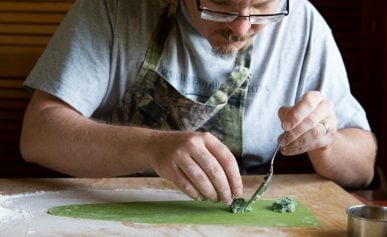
Stretching in Place
Quarantine has been a great opportunity to stretch yourself mentally, physically, and culinarily. Here are some ideas for you.
Read More
Time and Place on a Plate
When you can get out into the world again, do so with new eyes. Seeing what is around you when you hunt, fish or gather can inspire beauty on the plate.
Read More
Wasting Less, Living Better
Being thrifty in these times is a necessity. Here’s how I stretch and innovate in the kitchen using what I have handy.
Read More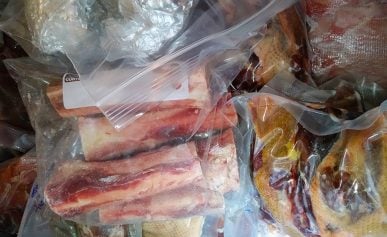
How to Salvage Freezer Burned Meat
When you can’t go to the store that often, you look into the depths of your freezer. Sometimes you don’t like what you see. Here’s how to deal with ancient frozen bits.
Read More




HI HANK- I THINK I MUST BE AMONG MANY OF THE MINORITY GROUPS AMONG YOU FOLLOWERS- MY HUSBAND, OUR RESIDENT GARDENER, IS FROM A LONG LINE OF JAPANESE FARMERS, AND WE LIVE IN THE NYC METRO AREA. I ALWAYS WISHED I COULD FORAGE BUT HAVE RARELY HAD ANY OPPORTUNITIES. BUT READING THIS I HAD TO PROUDLY SAY THAT MY ENTIRE GARDEN IS ON A STRICTLY VOLUNTEER BASIS. MY SWEETIE DUTIFULLY MOWED LAWNS, PLANTED TOMATOES AND PULLED “WEEDS” UNTIL ABOUT 5 YEARS AGO WHEN HE BROUGHT IN ONE PLANT AND PLEADED WITH ME TO COOK IT. IT TURNED OUT TO BE YOMOGI, MUGWORT TO US ‘MERICUNS, HIGHLY PRIZED THERE. SINCE THEN WE ARE OVERGROWN WITH YOMOGI, MINT, CHIVES, AND SUNCHOKES IN THE FRONT, ALONG WITH DANDELIONS AND VIOLETS WE USE PARTLY; THE BACK IS RASPBERRIES, BLACKBERRIES AND GRAPE VINES. NOT THE SAME VOLUNTEERS AS YOU HAVE, BUT EVEN HERE , MOTHER EARTH PROUDLY PROVIDES.
I now have fennel growing in my garden. I have no idea how it showed up at first as I had never planted it or bought it. The first year, I just let the plant be and then harvested the seeds for cooking. This year I have several plants. I have discovered how much I like fennel! I’m making sure to leave one to go to seed on purpuse.
Thanks Hank. I was down yesterday working in the garden so just reading now.
Norcal+SF microclimates make our volunteers probably a little different than what you can raise (yeah capsicum not so much unless you know of some that thrive on summer gloom?) Favas and wild arugula are go-to salad/fresh green bases for our family right now though, favas in particular thrive here since I can sow about every month figuring the last will still be ok in June-July, and the volunteers are either munchies or get composted back in depending on the soil and spot in my yard.
I love purslane and rarely can get it in our markets; it seems “fleshy” like agave or cacti but I don’t know if the analogy holds and it is something that can deal with our droughts, or instead that moisture means it takes a lot of wetness to reseed/volunteer? Also no idea if it is a N fixer like favas or the clover cover I sometimes rotate through, or a heavy eater? Interested in whether you use it in rotation or if it stays in one spot perenially.
Thanks as always!
My wife, the gardener, loves volunteers when they are out of the way – squash growing out of the compost bin, Jerusalem artichokes in the scrappy ground near the neighbour’s house – but ruthless when they get in the way. Notably, we have wild garlic coming up all through the garden, pretty much wherever it wants. She usually leaves it. As she says, it’s a good companion plant to a lot of things, especially roses, it discourages some pests, and it’s tasty. She harvests it by the handful, though the little cloves can be fussy to use, and we also have scapes for a good part of the early summer. We’re happy to see them.
Thanks for all of the posts!!
I’m curious what kind of beans you can grow in winter. We’re south of you in the Central Valley and grow our beans in the summer. Do you use hoop coverings?
Steve
Steve: Fava beans and peas overwinter very well, as do garbanzo beans.
Thanks. We do peas and will have to give the others a go.
thank you– today’s read was interesting– as I have called my ‘volunteers’ –repeat customers…and like you –I sometimes move therm around–but mostly remove + destroy—for me, they have never been as strong as the ones I’m planting ….they tend to be weak and annoying fillers–
You have noted that you do ‘crop rotation – after a ghastly summer of tomato blight–I had to rip out all-but 2 low acid(orange cherry types) tomato plants-which never were affected in their corner of my plot..I’ve added new compost (Mar/April) any idea whaat I can plant in that 10’ section -that will not incur the blight again? THANX FOR ANY AND ALL HELP. JW
Jeannette: If it were me, I would plant beans where the tomatoes were. They help rejuvenate the soil.
Great piece Hank! I like to let parts of my garden go to seed as well and always enjoy the volunteers, transplanting some, removing others.
Here in the Deep South Okra is another that will readily re-seed itself.
Great piece!
I have tiger lilies, more than I want. A lot of Chinese recipes call for dried lily buds. Can I use these? Should I dry some for future use?
Hi Mary, I’m an acupuncturist/herbalist and the dried lily buds in many Chinese recipes is usually Ba Wang Hua (sometimes spelled a couple different ways) which, though translated on the bag as dried lily bulbs/bud, are not the tiger lilies that you have. They are actually the flower off a type of succulent. Search Hylerereus Undatus Flower or Ba Wang Hua for pics (and recipes).
Don’t use tiger lilies! Those recipes are probably referring to day lilies which can help sauce thicken. I think tiger lilies are poisonous!
Hi Mary! This is an old post, so not sure if this will still be helpful. The dried lily flower you see is for the daylily, not the tiger lily. This is the one used for hot and sour soup and Jai (known as Buddha’s delight). My Cantonese in laws have been growing this for years for culinary purpose.
Hank: About 25 years ago we spent a couple nights in an Anasazi dwelling (cliff dwelling) in a remote area in Utah. Watched the same sunrises and sunsets and shadow movement across the canyon that the ancient people watched daily at that time of the year. Below the dwelling there were “wild” peas growing that could almost only have been the result of annual volunteering. We didn’t pick a lot, but enough to throw in with the evening meal and have a taste of the longest surviving series of volunteers I have ever heard of. Last year I reconnected (and hunted Elk) with the old friend that had spent the night in that Anasazi dwelling with me. When the subject of camping in Utah came up around the fire one evening those peas were the first thing he mentioned.
great piece, thanks. I’ll never look @ volunteers the same & will try growing out a few rogue tomatoes this year.